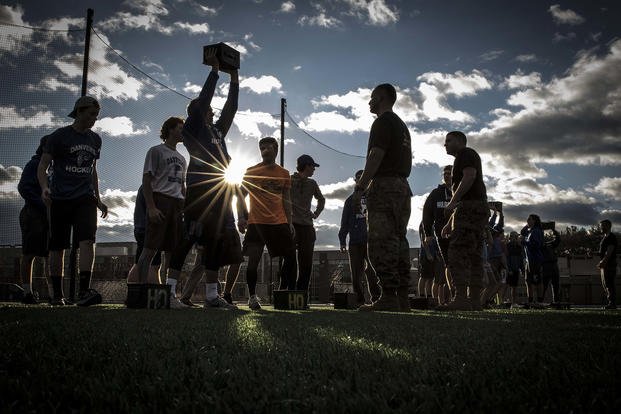A young man or woman in high school who's focused on serving our country is a great thing to witness. Their focus on something greater than themselves should reassure us that there are still people from younger generations willing to serve. Here is an email I received from a young man who is concerned about preparing himself for a future in the SEAL teams while still training for various sports.
Hey, Stew. I am in ninth grade, and I am seriously considering the SEAL challenge. I just recently got done with track and moved on to weight training. Track really helped me with endurance, and I am really good at core workouts and pull-ups and push-ups. Weight training is a challenge because I'm not used to it, but the coach there is saying he wants to work on my explosiveness for football next season. I was considering doing cross country again instead of football because of the long-distance runs and the mental side of it. Would it be a good idea to stay with the weights till I graduate and be more explosive or moderate the weights with some core and PT throughout my high school years?
Pick the sports you enjoy doing. These will provide great skills for you to learn. Your skills as a team player can be enhanced by activities in high school and college, so keep up what you're doing. Running is an invaluable skill as well at SEAL training, but so is having a strong upper body, core, and legs. Lifting is something you should do with the guidance of your coaches.
It is great to play multiple sports. That way, you can build strength, power and speed in sports like football and endurance and stamina in track and cross country. Now you will have to pick between football and cross country because both are fall sports. But if you like running, try track in the spring. Some mentally tough races are the 800, 1,500 and 3,000 meters if you like longer distances. You also could try some shorter speed or jumping events as well. Find what you enjoy doing.
The one thing you will have to fit into your year will be swimming. Swimming can be a great way to build cardio endurance in a non-impact way, as well as prepare you for swimming and water confidence in a future profession. Swimming after running and practice is a great way to loosen joints and only takes 20-30 minutes at the most to get an effective workout. Just treading water with no hands is a way to loosen the hips, knees, thighs, hamstrings and calves.
Arrange your workouts so you are lifting during the offseason for cross country, but you can mix in some calisthenics during running season to retain some muscle mass. If you change it up during the season, preseason and postseason throughout the year, you will be an all-around stronger athlete. Here is how I would break up your year, but there are many ways to do it.
Focusing on football/track workouts (fall and spring sports)
This will give you the summer and winter season to do your preseason training, when you also can mix in some SEAL-based training, such as swimming and calisthenics-testing elements (pull-ups, push-ups, sit-ups).
During the summer, you can mix in lifts and speed workouts for football, but you will have time to recover from other workouts during the week, such as swimming and supplemental calisthenics on lifting days. Make sure you are eating extra any time you are working out longer with additional workouts and strive not to work the same muscle groups on back-to-back days. Try to gain some muscle and bulk for football; you will need it.
Fall sports
During football season, you should focus on more maintenance lifting and healing bumps and bruises. Getting in a few swims per week is great if you have time for 15-20 minutes of tread or technique swimming of the combat swimmer stroke. See CSS Teaching video breakdown.
Offseason and winter
This is a combination time to heal from the rigors of a contact sport, but also when to start your running progression. Your coach should have a standard running build-up for you to get up to competition speed and may have you lifting for a few months before the season, depending on your events.
Spring track
Now you are in-season again, mainly doing specific training that will help you peak at the end of the season. Focus on the specifics here, only using swimming and treading as a cooldown recovery workout a few times a week. The rest is a running and mobility focus.
There is a term for this type of training: periodization. It just means scheduled changes to training in many cycles through the year. At the end of the year of a two-sport year, you will have become faster, bigger, leaner, stronger, and if you actively pursue recovery and mobility regularly, you will have some amount of flexibility, too.
Stew Smith is a former Navy SEAL and fitness author certified as a Strength and Conditioning Specialist (CSCS) with the National Strength and Conditioning Association. Visit his Fitness eBook store if you're looking to start a workout program to create a healthy lifestyle. Send your fitness questions to stew@stewsmith.com.
Want to Learn More About Military Life?
Whether you're thinking of joining the military, looking for fitness and basic training tips, or keeping up with military life and benefits, Military.com has you covered. Subscribe to Military.com to have military news, updates and resources delivered directly to your inbox.


















